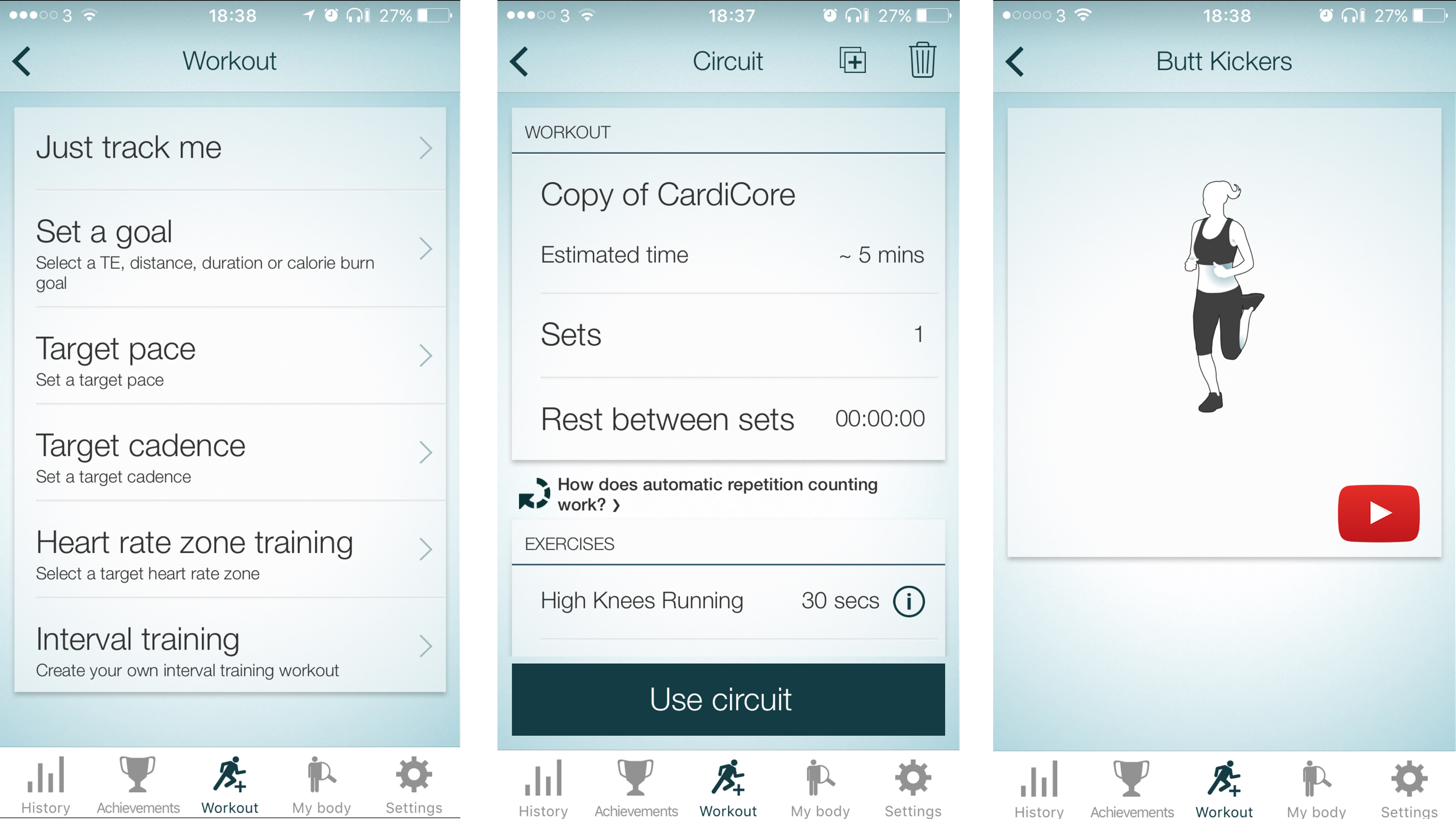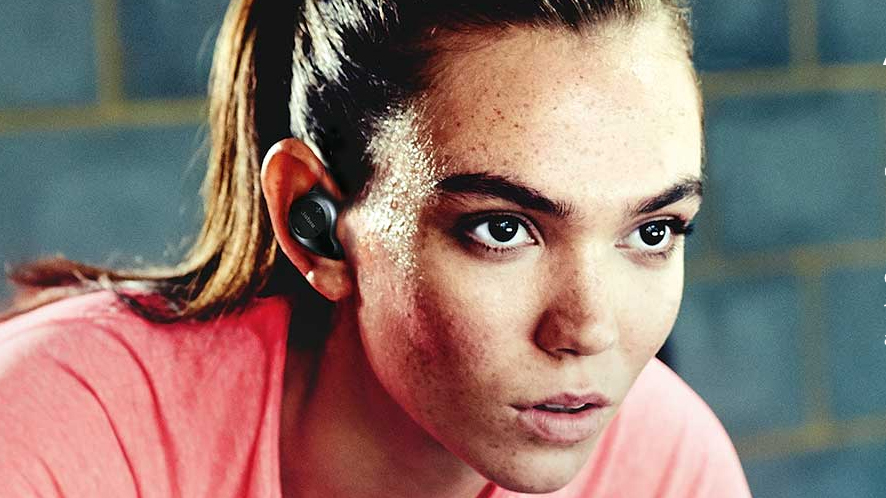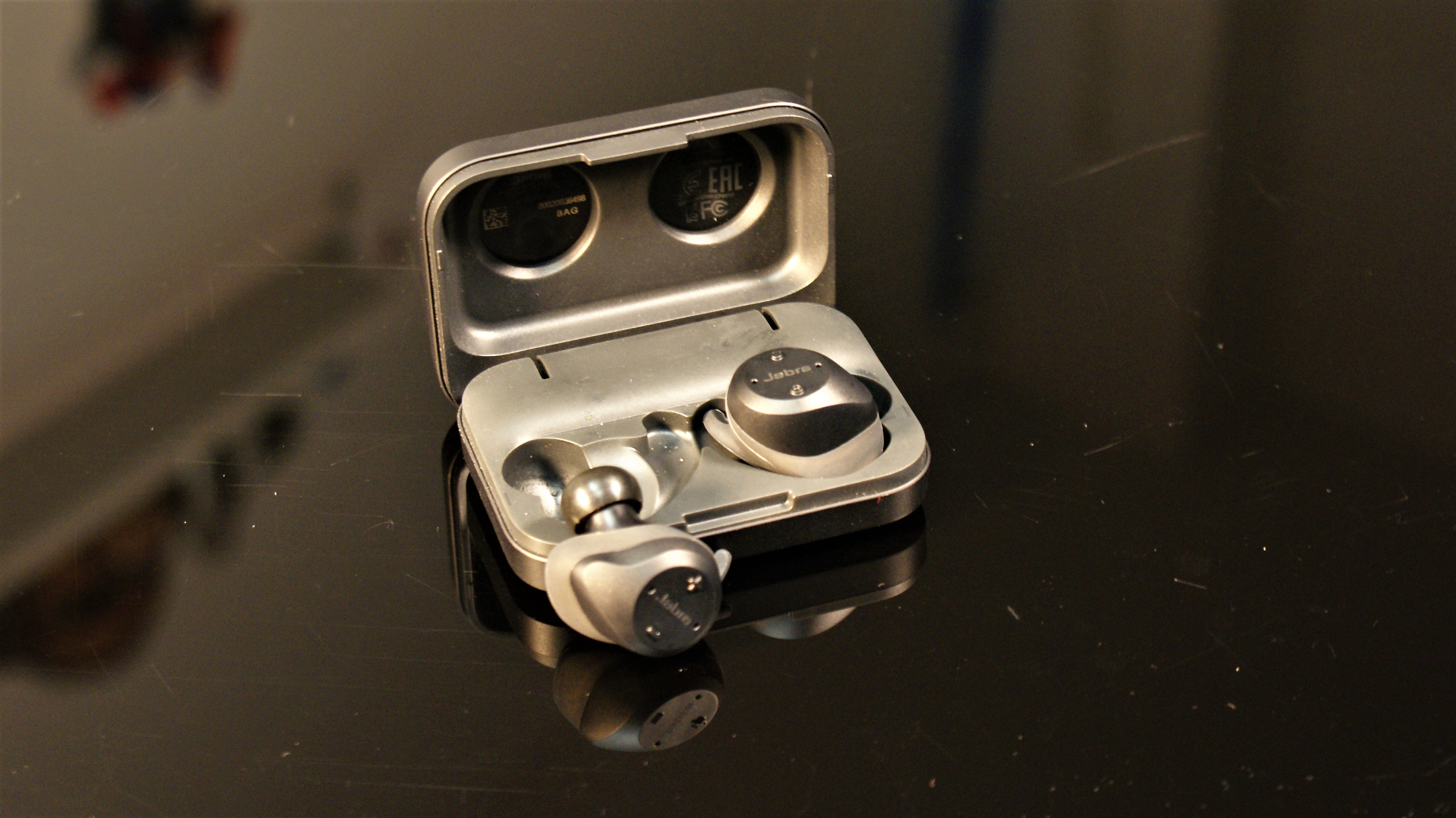Why you can trust TechRadar
The final day of the test was upon me, and it was going to be a simple one: trying out the battery life claims to make sure the headphones would work as advertized.
The carry case they live in doubles as a charger, and you’ll get around 4.5 hours of charge off one juice, with the case supplying a further two charges before needing to be plugged in.
However, the charging status is only indicated by a glowing LED on the outside of the case, and I’m still not entirely sure what the colors mean.
When it glowed anything other than green after inserting the headphones back into their little house I just stuck the whole box on charge. It seemed the simplest approach, and over the days it’s seemed to work – although it takes hours to juice up fully, and doesn’t seem to hold charge in a predictable way.
Back to the Jabra Elite Sport headphones themselves, and I set off on a two-hour, 15-mile run, simply streaming music over Bluetooth to check out the buds’ ‘normal’ burn. Over the run they lost just over 1.5 hours of charge, which seemed pretty good to me.
The JES headphones do have decent battery life – taking them out of their case fully charged, they showed the expected power loss (based on Jabra’s four-and-a-half-hours battery life claims) after a heart rate-tracking interval session – about an hour’s battery lost for a 45-60 minute workout.
I should also say that the fit has improved over time, with no pain reported after a couple of hours’ wear – although my jaw did still feel ‘stiff’ at the end of the run as a result. Also, don’t use the foam earbud tips for a long run as they’ll absorb sweat and expand, and you’ll need to leave them on a radiator to get them back to normal.
Stupid physics.
Training plans
The thing that upset me the most (and which I’ve barely touched on in this review diary) is the training plan option, as this appears to be inaccessible until you’ve used the headphones for a month.
The reason I’m bothered is, well, it looks brilliant. Dedicated training sessions and plans that are based around you and your abilities, rather than generic, off-the-shelf offerings.
But the fact that they’re based around your fitness is the problem – as we’ve seen, the Jabra Sport app’s coaching system bases this fitness on your VO2 Max, and that’s a fallible measurement out of the box, requiring an unknown amount of runs to accurately give you a decent view of your actual fitness level.

You’ll need to use the app at least three times a week for a month to get an accurate and usable training plan built for you – it feels like a lot of effort, but if you put that time in then you should see some decent benefits.
The training suggested inexplicably doesn’t include the cross training / strength sessions either, where it’s perfectly placed to.
Firstly, the plan will recommend runs based on your fatigue levels. Assuming you achieve a decent fit for the earbuds, and therefore correct heart rate tracking, the app will learn your personal needs, and that’s the perfect kind of training.
If you use the training plan straight out of the box, you’ll get a decent set of options, and if you follow them, they should adapt over time – so it’s fair that they couldn’t be tested instantly, as curated stuff is much better for the new runner.
Verdict
I’m impressed by the Jabra Elite Sport headphones in a large number of ways, but disappointed in some others.
The price is high, and as such I’d expect near-perfection. Repetition counting missing at the start was a big mistake and made me give up using the headphones for cross training - however, with that now supported, they’ve become a lot more useful.
One thing I’ve really liked is the ability to answer phone calls when on the run – all you need to do is say ‘answer’ when the call comes in and you’ll be able to have a chat on the go – and the voice quality is excellent, with minimal background noise.
However, the ‘answer’ mechanism only worked once for me – the rest of the time I’m running down the street screaming the word over and over while people are giving me very strange looks.
Not great - and apparently due to the iPhone 7 I was using, so the effectiveness is limited to Android devices for now.
What's good?
Jabra’s promotional materials for the Elite Sport headphones, predictably, show a lot of beautiful and athletic people using the system – and while the cost suggests that this is a headphone set designed for them, it’s really not.
However, for the runner / workout fiend who’s decided to get their butt off the couch and DO something about their expanding waistline, this is a great system. You’ve got loads of different workout types to play with – I’ve not even touched on the fact that things like spinning, hiking and cycling are all supported, and use the heart rate monitor to offer targeted training.
You’re also getting a decent set of Bluetooth headphones, with the connection generally strong in day to day use (although on the London Underground we found interference can cause the left earbud to stop working as effectively), so if you hate wires then these are a decent Airpods rival.

Even the fit is okay after a while – they’re lug-filling (to the point of inflicting a touch of pain from time to time, as mentioned), so they should appeal to anyone that wants a pair of Bluetooth buds that can shift from exercise to music playback without any effort.
The Jabra Elite Sport headphones will also double as a heart rate monitor for some applications – I couldn’t get them to sync with my Garmin watch, but some apps can use them to deliver heart rate info.
These things are also great at learning your actual limitations. Give them a few weeks’ use and you’ll really get a personalized look at your fitness – it’ll just take a while to properly bed them in.
Is there anything to look out for?
Despite the number of good things the JES buds can do, they’re a long way from flawless. The heart rate accuracy wasn’t great at times, with the fit playing a big part in delivering the right data, and I really tried to get them to stay in the right place.
Given that I don’t know how I could put them in my ears any more securely, I’m not sure what can be done here. Similarly, while the sound is pretty good, the option to use the external microphones to hear what’s going on in the world around you isn’t effective enough to let you continue a conversation with another person if music is playing.
But the main issue I had with the buds is mostly gone - the pain of pressing the buttons is much improved with the second batch I was given to try out. It's not great still, as the buttons are small and hard to find while running, but it's no longer excruciatingly painful.
The main sticking point, if you can call it that, is the price. It's not actually too bad for the amount of stuff you get with them and the impressive battery life, but it's hard to convince newer runners or cross-trainers (who will benefit most from the training on offer) to fork out this price on anything without a guarantee of a tangible benefit.
Overall verdict
The Jabra Elite Sport headphones are a very powerful proposition, and can do a wide variety of things to help everyone from the novice to the practiced fitness enthusiast.
Spinning, running, cross-training and even hiking are all included, and the heart rate monitoring will give an accurate view of your fitness rather than just logging miles on your feet, and most of the time you can just fire them up and listen to the verbal cues to help you get the most out of a wide variety of training styles.
They’re also competent Bluetooth buds for use around town, with a long-enough battery life and good sound quality.
However, issues with the slightly iffy heart rate data at times, and the still-not-quite-automated-enough cross training still grate – they're good enough, but a touch more expensive than they need to be.
If you’re in the market for the ‘ultimate’ set of fitness headphones and don’t mind paying for them, then they are a strong choice. But if you’re budget-conscious, they’re a step in the right direction, but one that doesn’t quite go far enough.
Current page: Day 5 and verdict: battery life, training plans and rep counts
Prev Page Day 4: tough workouts and lost data
Gareth has been part of the consumer technology world in a career spanning three decades. He started life as a staff writer on the fledgling TechRadar, and has grew with the site (primarily as phones, tablets and wearables editor) until becoming Global Editor in Chief in 2018. Gareth has written over 4,000 articles for TechRadar, has contributed expert insight to a number of other publications, chaired panels on zeitgeist technologies, presented at the Gadget Show Live as well as representing the brand on TV and radio for multiple channels including Sky, BBC, ITV and Al-Jazeera. Passionate about fitness, he can bore anyone rigid about stress management, sleep tracking, heart rate variance as well as bemoaning something about the latest iPhone, Galaxy or OLED TV.
